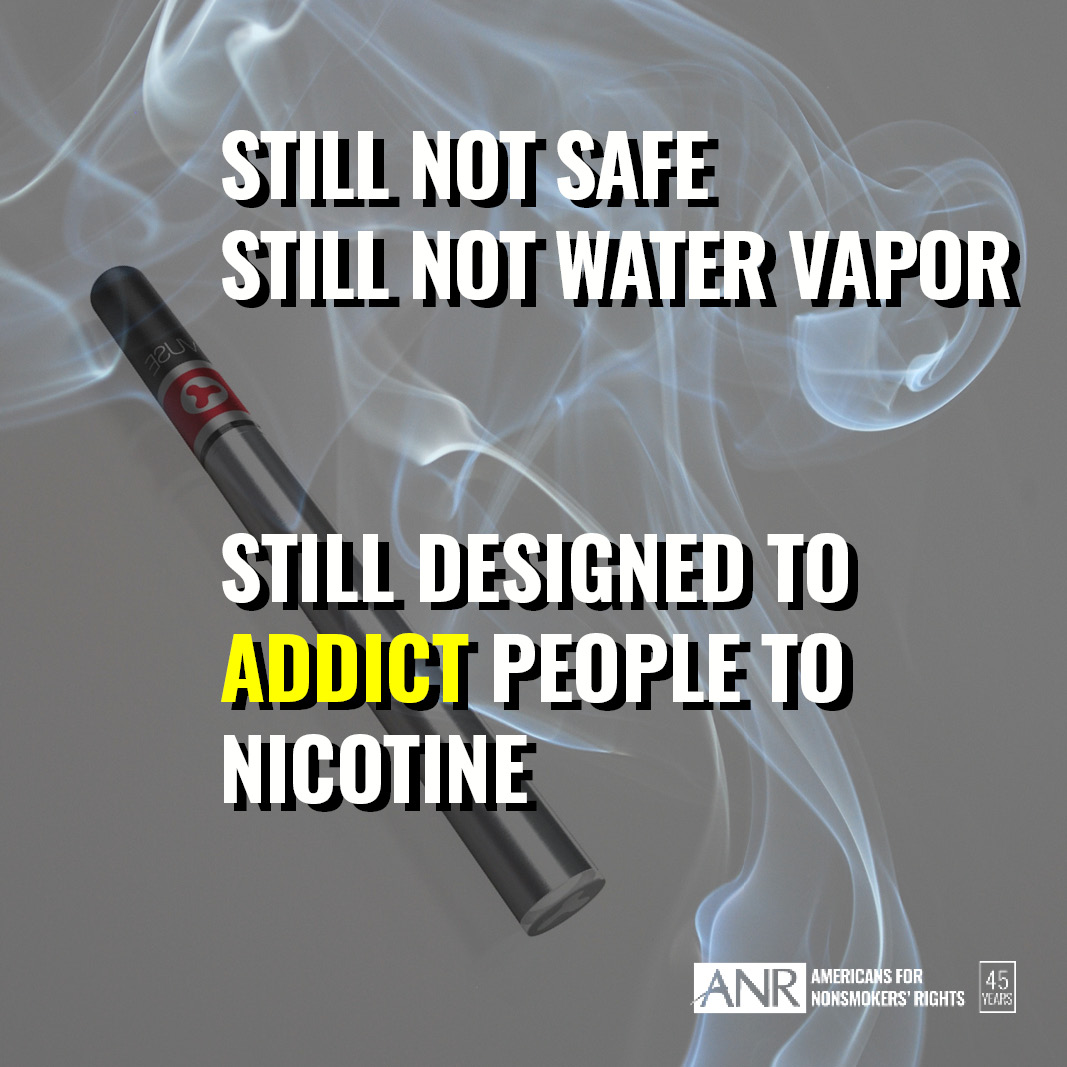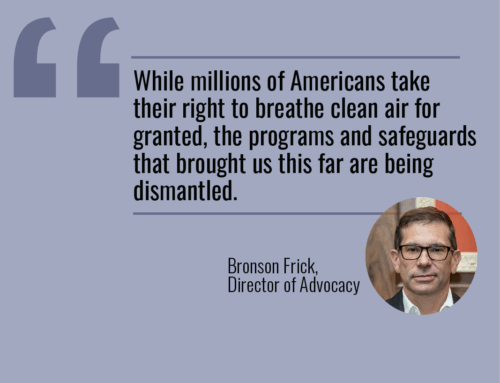It is likely unsurprising that Big Tobacco is attaching great significance to receiving the first FDA clearance to market e-cigarette products in the United States. As ANR/F has noted previously, this clearance is in no way an endorsement of the safety of these products. Additionally, while many states laudably tackle issues of criminal justice and marijuana’s role in needless incarceration, those seeking to profit at the expense of public health have promoted the idea that marijuana use, particularly vaping, is either not harmful or even beneficial. Both lobbies have pushed hard for both legislators and the general public to view vaping as something different from smoking and reduce the legal protections for clean air in public places.
As study after study shows that the purported benefits of vaping, whether nicotine or marijuana, are illusory, the companies pushing these products are ramping up their attempt to confuse people as to what these products contain and their effect on public health. The FDA’s marketing order means little more than that the companies have demonstrated that their products are no worse than traditional smoking. This marketing order clearance process stands in stark contrast to ordinary FDA approval of a product, which carries an endorsement that the product is safe and beneficial. The FDA stresses several times in its documents that the Premarket Tobacco Product Application (PMTA) is in no way an approval of the use or promotion of the product as beneficial, merely an authorization to sell it for reaching certain minimum benchmarks related to public health. Even the order itself states that emerging evidence to the contrary could change the Agency’s position going forward. Any claim by industry stakeholders to safety of their products or efficacy as a cessation method based on the FDA’s statement is simply spin.
Among the problems with the industry position is that it is at odds with the science. There is no evidence that vaping of any product is harmless. Additionally there is new scientific evidence, presented in JAMA Pediatrics, that vaping marijuana has led to significant uptake of use among high-school students, and is associated with serious negative physical and mental health outcomes in youth, including potentially fatal EVALI. And while Big Tobacco would like you to believe that these issues are limited to marijuana products, the fact remains that 14% of EVALI cases were observed in people who reported only vaping nicotine products. Furthermore, Big Tobacco has failed to demonstrate credible evidence for their claims that widespread use and marketing of nicotine vaping products has been effective at reducing traditional smoking, reducing public health effects of widespread smoking, or curbing the uptake of smoking among young people. In fact, it appears that vaping has done more to put nicotine into the hand of young people and into the air they breathe in schools, restaurants, and public places than any product since the beginning of the smokefree movement.
In contrast to Big Tobacco and the marijuana industry, which have tried to obfuscate the issue by claiming vaping is not smoking and by extension not harmful, ANR/F has been a consistent leader in following the science and firmly stating “smoke is smoke”. As science clarifies the deleterious effects of vaping any product, this position continues to prove correct and forms a clear and potent rebuke to industry dissembling and reinforces the need for smokefree environments to be free from all types of secondhand smoke and emissions.
Resources
See our research bibliography on e-cigarettes .
Read more: 3 Part Series on e-cigarettes
From 2019: Vaping Crisis






